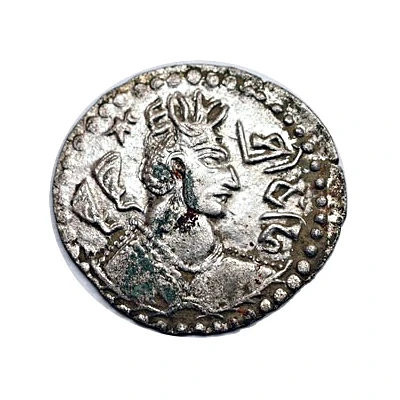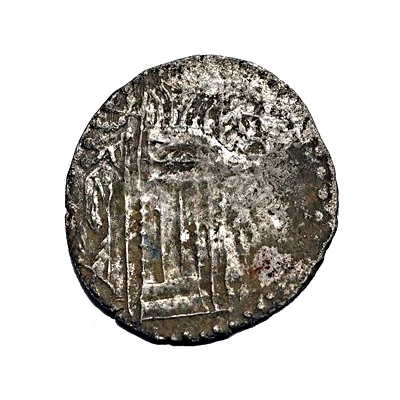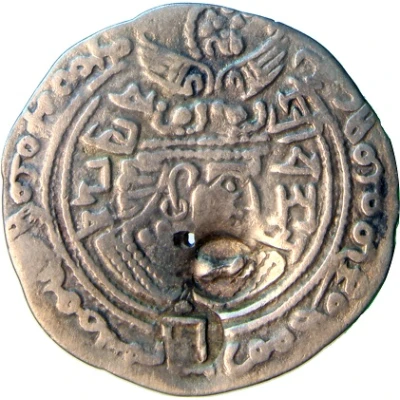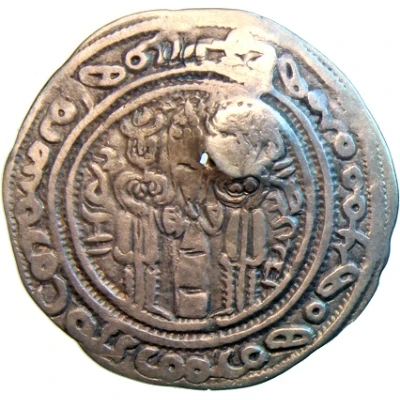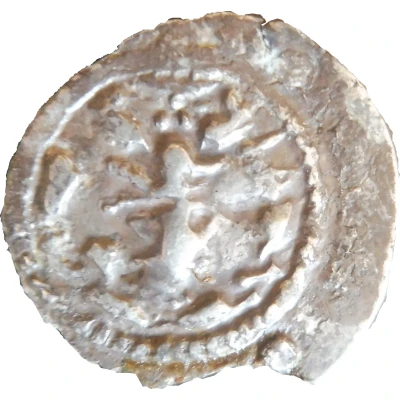
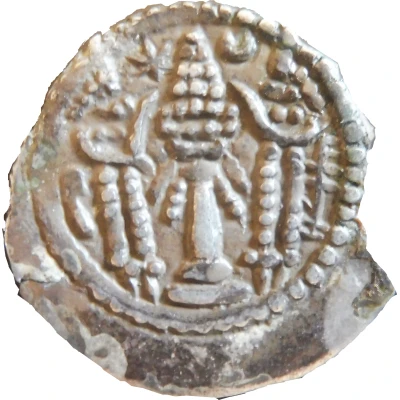

© Cycnos (CC BY-NC)
Drachm - Napki Malka White Huns
| Billon | 3.17 g | 26 mm |
| Issuer | Hephthalite Empire (Hunnic tribes) |
|---|---|
| Type | Standard circulation coin |
| Years | 561-600 |
| Value | Drachm (1) |
| Currency | Drachm (408-670 AD) |
| Composition | Billon |
| Weight | 3.17 g |
| Diameter | 26 mm |
| Shape | Round (irregular) |
| Technique | Hammered |
| Demonetized | Yes |
| Updated | 2024-10-10 |
| Numista | N#141107 |
|---|---|
| Rarity index | 97% |
Reverse
Represented in a stylized way, an altar of fire located between two servants; above a star in the left field and a crescent in the right field.
Bacterial inscriptions at 4 o'clock and monogram at 8 o'clock.
Lettering:
βαχλο
mp
Comment
- The Hephtalite Huns drew their inspiration from the Sassanian drachma coins provided as ransom for the release of Peroz I's son, who had been held by the Sassanians for two years following the king's defeat by the Huns in 474.
From then on, this coinage lasted for around two centuries.
This particular type, on the other hand, seems to have been minted rather late, following the Hephtalic defeat by a Turkish-Sassanian alliance (in 560 - 561), as shown by the low silver content of these examples.
- On the reverse, the city of Balkh in present-day Afghanistan, where the imitated drachms were issued, is mentioned. However, it is highly probable that these coins were actually minted near the town of Termez in Uzbekistan, where a large number of these examples have been found.
- The term "iabgo" on the obverse is thought to represent an honorary title for the ruler of the Hephtalic Huns: other types exist without this inscription.
Interesting fact
The Drachm - Napki Malka (White Huns) coin from the Hephthalite Empire features a unique blend of Hunnic and Indian influences in its design, reflecting the cultural exchange and syncretism that occurred during the period of Hunnic rule in the region.
